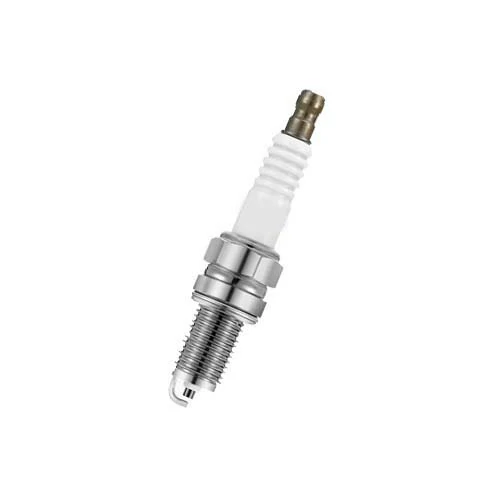Auto parts, including components such as control arms, ball joints, tie rod ends, sway bars, and bushings, play a crucial role in determining suspension geometry and alignment in a vehicle.
Here’s how these auto parts contribute to suspension geometry and alignment:
- Control Arms: Control arms are key components of a vehicle’s suspension system, connecting the steering knuckle or spindle to the vehicle’s frame or subframe. They help control the motion of the wheels and maintain proper suspension geometry during driving, braking, and cornering. Control arms typically have attachment points for other suspension components such as ball joints and bushings.
- Ball Joints: Ball joints connect the control arms to the steering knuckle or spindle, allowing for the articulation and movement of the suspension components. They provide a pivot point for the control arms to move up and down, as well as side to side, while maintaining proper alignment of the wheels. Ball joints play a critical role in supporting the weight of the vehicle and transmitting steering inputs from the steering system to the wheels.
- Tie Rod Ends: Tie rod ends connect the steering rack or center link to the steering knuckle or spindle, transmitting steering inputs from the steering system to the wheels. China auto parts supplier They are essential for maintaining proper alignment of the front wheels and ensuring accurate steering response. Tie rod ends are adjustable to allow for alignment adjustments and are critical for preventing toe-in or toe-out alignment issues.
- Sway Bars: Sway bars, also known as stabilizer bars, are components of a vehicle’s suspension system that help reduce body roll or sway during cornering. They connect the left and right sides of the suspension together, typically through sway bar end links or stabilizer bar links. Sway bars help maintain proper suspension geometry by controlling the movement of the suspension components and distributing forces evenly between the wheels.
- Bushings: Bushings are rubber or polyurethane components that provide cushioning and support for various suspension components, including control arms, sway bars, and stabilizer bar links. They help absorb road shocks and vibrations, reduce noise and harshness, and maintain proper alignment of the suspension components. Bushings also play a role in preventing excessive movement or play in the suspension system, which can affect alignment and handling.
Overall, these auto parts work together to maintain proper suspension geometry and alignment, ensuring that the wheels are positioned correctly relative to each other and to the vehicle’s frame or chassis. Proper suspension geometry and alignment are essential for optimal handling, stability, and tire wear, as well as ensuring safe and predictable driving characteristics. China auto parts manufacturers Regular inspection and maintenance of these components are necessary to identify and address any issues that may affect suspension geometry and alignment.
How does a auto parts affect the ride comfort of a vehicle?
Auto parts play a significant role in determining the ride comfort of a vehicle by influencing various aspects of its suspension system. Here’s how different auto parts affect ride comfort:
- Shock Absorption: Components such as shock absorbers (also known as dampers or shocks) and struts help dampen the effects of road irregularities and vibrations. They absorb impacts from bumps, potholes, and rough surfaces, preventing excessive jolts and vibrations from reaching the vehicle’s cabin and occupants. Well-maintained shocks and struts contribute to a smoother and more comfortable ride by effectively controlling suspension movement.
- Spring Rate: Springs, including coil springs and leaf springs, support the weight of the vehicle and provide cushioning against road imperfections. The spring rate, or stiffness, of these components affects how they compress and rebound in response to bumps and uneven surfaces. A softer spring rate results in a smoother ride, as it allows the suspension to absorb more of the road impacts. Conversely, stiffer springs provide better handling but may transmit more road harshness to the occupants.
- Bushings and Mounts: Bushings, mounts, and other rubber or polyurethane components within the suspension system help isolate vibrations and noise from the vehicle’s frame and chassis. They provide cushioning and damping effects, reducing the transmission of road harshness to the cabin. Well-designed and properly maintained bushings and mounts contribute to a quieter and more comfortable ride by minimizing vibrations and rattles.
- Alignment and Suspension Geometry: Proper alignment and suspension geometry ensure that the wheels track straight and true, minimizing tire wear and ensuring stable handling. Misaligned wheels or suspension components can cause uneven tire wear and steering pull, leading to a less comfortable driving experience. China auto parts supplies Components such as control arms, tie rod ends, and ball joints play a crucial role in maintaining proper alignment and suspension geometry.
- Sway Bars: Sway bars, also known as stabilizer bars, help reduce body roll or sway during cornering by connecting the left and right sides of the suspension together. They improve stability and handling without sacrificing ride comfort, as they only become active during cornering or evasive maneuvers. Properly tuned sway bars strike a balance between handling and ride comfort by minimizing body roll without compromising suspension compliance.
- Tire Selection and Condition: Tires are a critical component of ride comfort, as they are the primary point of contact between the vehicle and the road. The type, size, and condition of tires affect ride quality, noise levels, and handling characteristics. Proper tire inflation, regular rotation, and adequate tread depth contribute to a smoother and more comfortable ride by ensuring optimal traction and road contact.
Overall, auto parts collectively contribute to the ride comfort of a vehicle by absorbing shocks and vibrations, providing cushioning against road irregularities, and maintaining proper alignment and suspension geometry. Regular inspection, maintenance, and replacement of worn or damaged components are essential for preserving ride comfort and ensuring a pleasant driving experience.
